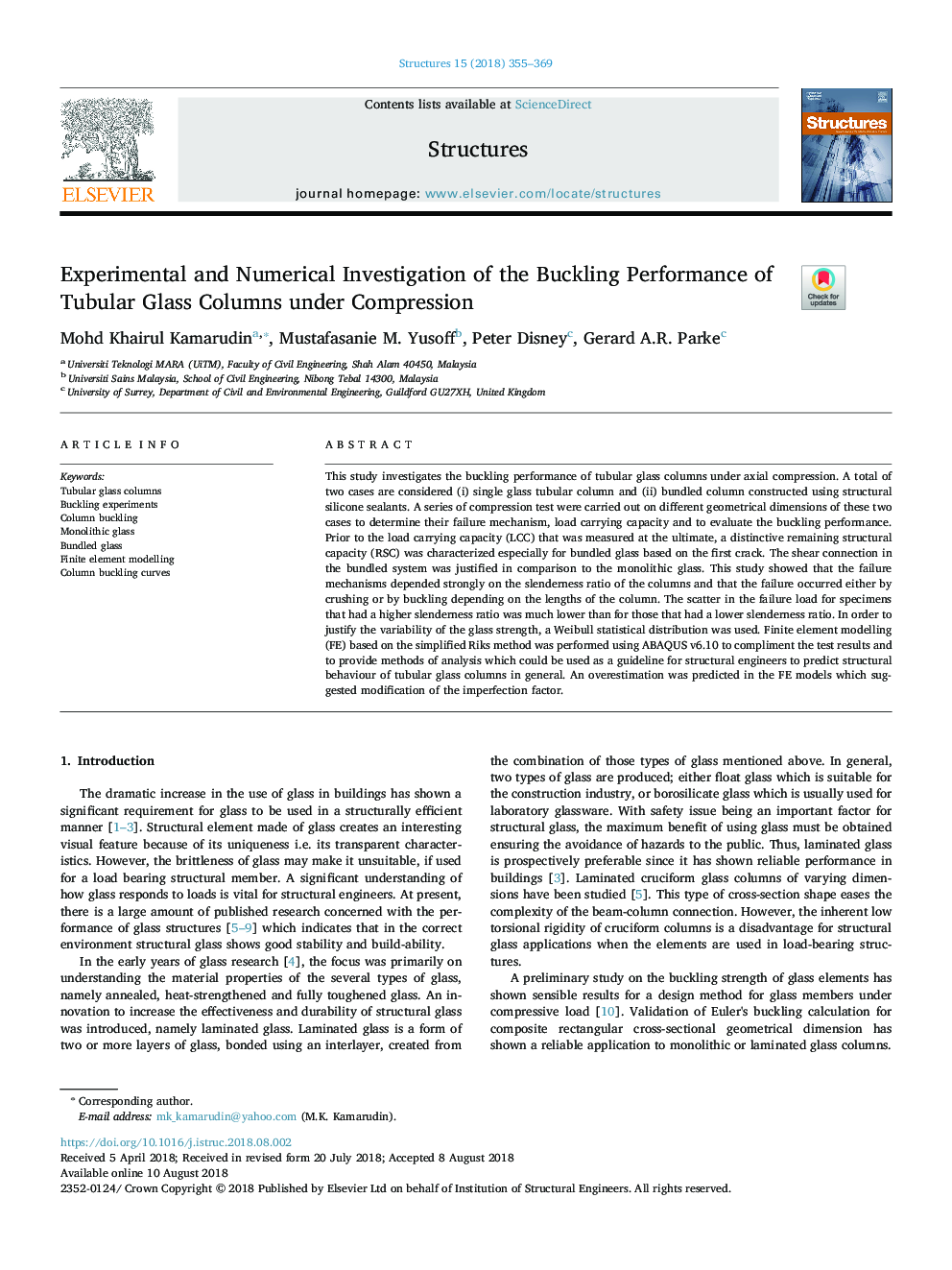| Article ID | Journal | Published Year | Pages | File Type |
|---|---|---|---|---|
| 6774431 | Structures | 2018 | 15 Pages |
Abstract
This study investigates the buckling performance of tubular glass columns under axial compression. A total of two cases are considered (i) single glass tubular column and (ii) bundled column constructed using structural silicone sealants. A series of compression test were carried out on different geometrical dimensions of these two cases to determine their failure mechanism, load carrying capacity and to evaluate the buckling performance. Prior to the load carrying capacity (LCC) that was measured at the ultimate, a distinctive remaining structural capacity (RSC) was characterized especially for bundled glass based on the first crack. The shear connection in the bundled system was justified in comparison to the monolithic glass. This study showed that the failure mechanisms depended strongly on the slenderness ratio of the columns and that the failure occurred either by crushing or by buckling depending on the lengths of the column. The scatter in the failure load for specimens that had a higher slenderness ratio was much lower than for those that had a lower slenderness ratio. In order to justify the variability of the glass strength, a Weibull statistical distribution was used. Finite element modelling (FE) based on the simplified Riks method was performed using ABAQUS v6.10 to compliment the test results and to provide methods of analysis which could be used as a guideline for structural engineers to predict structural behaviour of tubular glass columns in general. An overestimation was predicted in the FE models which suggested modification of the imperfection factor.
Related Topics
Physical Sciences and Engineering
Engineering
Civil and Structural Engineering
Authors
Mohd Khairul Kamarudin, Mustafasanie M. Yusoff, Peter Disney, Gerard A.R. Parke,
